Want to get fit? Don’t get stuck in your comfort zone
Have you noticed that we humans 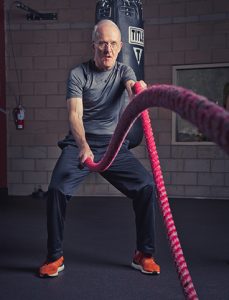 often gravitate to the things we’re good at, and shy away from the things we can’t do well? We get confidence from being in familiar territory, and self-esteem from our mastery of a skill or task.
often gravitate to the things we’re good at, and shy away from the things we can’t do well? We get confidence from being in familiar territory, and self-esteem from our mastery of a skill or task.
In the gym, that translates to sticking with the exercises we know—the ones we can knock out without any hitch or hesitation. We might even do the same routine time after time, going down a mental (or written) checklist and ticking off the boxes, in order.
But the science of resistance training tells us that’s not the way to get results. The way to grow stronger and fitter over time is by asking your body to do just a little bit more than it could before. If your workout is “no sweat,” that means “no gain.”
Working on weaknesses
That’s why seasoned trainers don’t limit their routines to a standard run-through of major muscle groups. The good ones will help you systematically diagnose and work on your areas of weakness over time, gradually bringing them into balance with the stronger parts of your body.
To be clear, I’m not for a minute suggesting that you push yourself to your limits at all times. That’s asking for trouble if you’re over 50, and overtraining is counterproductive at any age.
How can expand your comfort zone without overdoing it? The key is making sure you push the envelope gently, gradually, and selectively.
One step at a time
At each workout, or every week or so, pick just one exercise you’d like to progress or one muscle group you want to strengthen. If, for example, you can’t do a full squat so your knees make a 90-degree angle, spend some time focusing on that.
Then explore different ways to challenge yourself. Increasing the weight you’re lifting is only one possibility. You can add a set. Or do more repetitions in each set. Or increase your range of motion. Going from a bilateral to a unilateral exercise, such as a one-legged squat or one-armed bicep curl, can build strength rapidly. It will also immediately tell you if one side of your body is stronger than the other.
In my book, improving your movement form is always the place to start. Only when you can do 15 repetitions of an exercise with good form should you think about adding weight.
Mixing things up is another good way to challenge your body. Do a different shoulder exercise than the one you’re accustomed to. Or use different equipment—say, cables instead of a barbell.
As a top trainer once told me, “If you want to be fit, get comfortable with being uncomfortable.” In other words, take an exercise to the point where you feel you’ve had enough…and then do one more repetition. That last bit of effort will produce rewards over time.
Image: Black Swan Photography
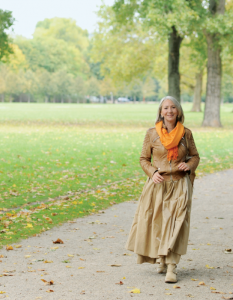 It may sound strange to think about practicing something we’ve all been doing since we were toddlers. But going for a walk is a perfect opportunity to generally improve the ways you move. Use your walks as a chance to focus on:
It may sound strange to think about practicing something we’ve all been doing since we were toddlers. But going for a walk is a perfect opportunity to generally improve the ways you move. Use your walks as a chance to focus on: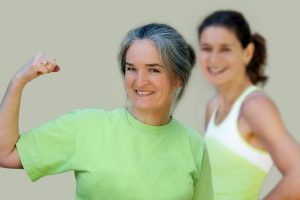 Mother’s Day is a perfect occasion let your mom or mother-in-law know you want her to be healthy, happy, and vigorous for years to come. If she’s not already doing something to stay fit, it’s not too late—and you can help! Joining her in a walk, a stretch, or a workout is a great way to celebrate the holiday. You can also encourage her to take steps toward a well-rounded fitness program, keeping a few basic principles in mind.
Mother’s Day is a perfect occasion let your mom or mother-in-law know you want her to be healthy, happy, and vigorous for years to come. If she’s not already doing something to stay fit, it’s not too late—and you can help! Joining her in a walk, a stretch, or a workout is a great way to celebrate the holiday. You can also encourage her to take steps toward a well-rounded fitness program, keeping a few basic principles in mind.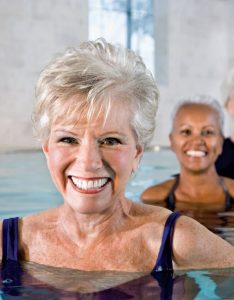
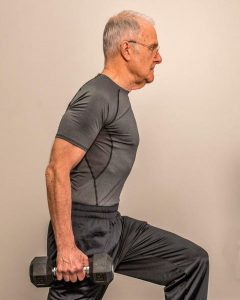
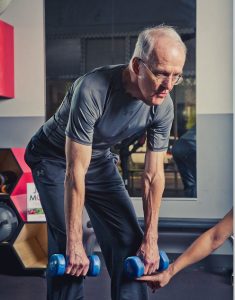 gives me a time and place to focus on improving how I move. It’s like a laboratory where you gain insight into your strengths and weaknesses and figure out what your body needs in order to be more balanced and functional. (Ideally, you do this with the help of a skilled trainer who brings expert knowledge and an objective eye to the effort.) That work continues outside the gym. As you improve your patterns of movement in your workouts, you can apply that learning to all your other activities. Over time, those new and better ways of moving become embedded in your muscle memory.
gives me a time and place to focus on improving how I move. It’s like a laboratory where you gain insight into your strengths and weaknesses and figure out what your body needs in order to be more balanced and functional. (Ideally, you do this with the help of a skilled trainer who brings expert knowledge and an objective eye to the effort.) That work continues outside the gym. As you improve your patterns of movement in your workouts, you can apply that learning to all your other activities. Over time, those new and better ways of moving become embedded in your muscle memory.